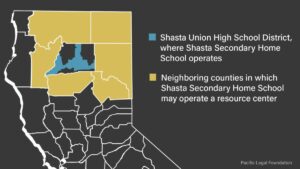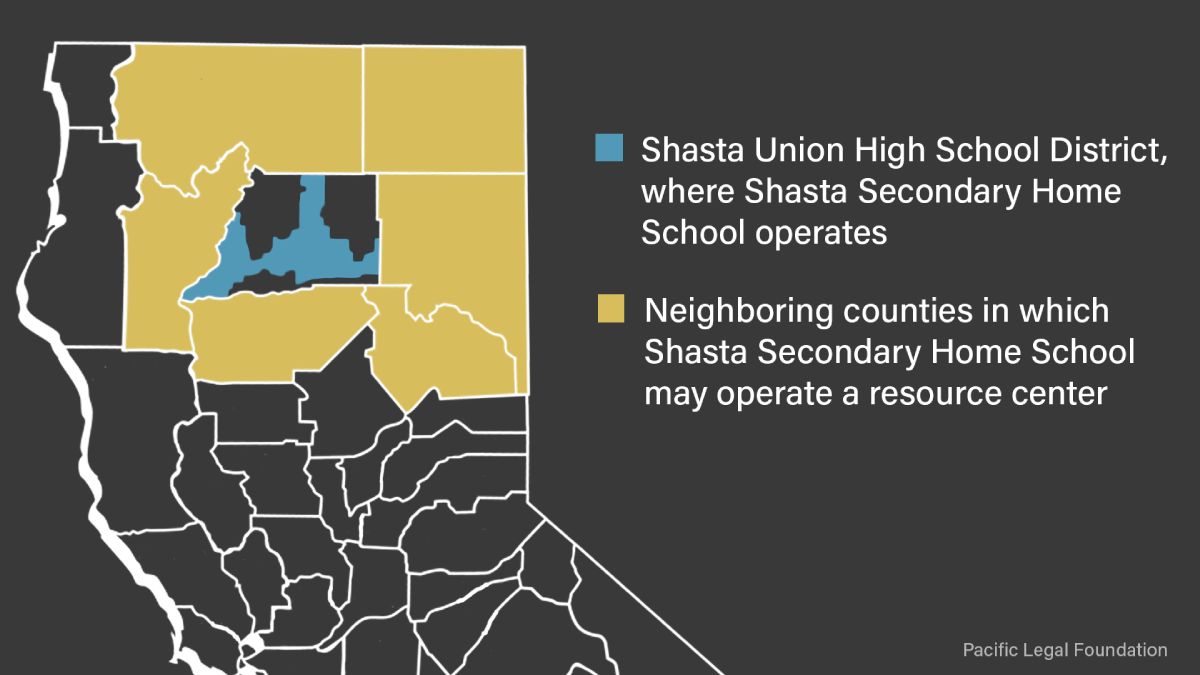Confusing and disappointing decision in lawsuit against charter school
 This morning we received a disappointing decision in Anderson Union High School District v. Shasta Secondary Home School. The court of appeal held that non-classroom based charter schools may not operate a “resource center” in the county where the charter school is authorized, unless it is within the geographic boundaries of its authorizing school district. In so ruling, the court of appeal reversed the lower court’s opinion. The court purported to apply a strict reading of the statutory text, but, as explained below, the decision makes little sense and leads to absurd results.
This morning we received a disappointing decision in Anderson Union High School District v. Shasta Secondary Home School. The court of appeal held that non-classroom based charter schools may not operate a “resource center” in the county where the charter school is authorized, unless it is within the geographic boundaries of its authorizing school district. In so ruling, the court of appeal reversed the lower court’s opinion. The court purported to apply a strict reading of the statutory text, but, as explained below, the decision makes little sense and leads to absurd results.
Shasta Secondary Home School is a non-classroom based charter school. It provides personalized educational support to students and parents tailored to a specific student’s needs. The charter school also offers resource centers for its students. Students can meet with their teacher at these resource centers. They offer labs, meeting rooms, work spaces, books, and optional classes. In rural Shasta County, it is an excellent option for students that need specialized instruction, or that don’t fit into the traditional public school model.
It’s one of these resource centers that drew the ire of Anderson Union High School District. California charter school law allows non-classroom based charters to operate a resource center within the boundaries of its operating school district, as well as, in any adjacent county. The charter school here was authorized by the Shasta Union High School District and operated two resource centers within the boundaries of that school district. It also opened a third resource center further south within Shasta County, but within the boundaries of the Anderson Union High School District. Anderson sued and said that this third resource center violated the law because it was neither in an adjacent county nor within the boundaries of the Shasta Union High School District. Unfortunately, the court of appeal agreed.
Above is a map — now authorized by the court of appeal — of the locations where the charter school may operate a resource center. It may operate a resource center in Shasta County, within the boundaries of the Shasta Union High School District and it may operate a resource center anywhere in Siskiyou County, Modoc County, Lassen County, Plumas County, Tehama County, or Trinity County — the neighboring counties. But the charter school is prohibited from operating a charter school in the county in which it sits — Shasta — if the resource center is located outside of the boundary of the Shasta Union High School District. The court of appeal created this prohibitive island in the middle of a sea of available territory that denies kids the opportunity to attend a resource center.
The prohibitive island is even more absurd upon closer inspection. First, the resource center Anderson is challenging is located a mere four miles from a different school district in a different county. So, if the charter school reaches an agreement with that neighboring district in a different county, it could locate a new resource center in essentially the same location. Second, a charter school in one of those adjacent counties, could open a resource center in the same area as the current charter school. Why would the complaining school district be better off if a charter school in Tehama County opened a resource center within its boundaries, as opposed to a charter school within the same county? Third, the court of appeal’s decision permits the charter school to operate a resource center hundreds of miles away — say in the far reaches of Modoc County — but prevents it from operating the same resource center a few miles down the road. This cannot be the intent of the legislature.
Anderson complained that the charter school was “stealing” its students by locating a resource center within its boundaries. Yet, the California Charter Schools Act is designed to encourage “vigorous competition” within the public school system. Competition should beget education, not litigation. Hopefully, this court of appeal’s decision won’t be the final say. Non-classroom based charters are vital to the success of thousands of California school children. Resource centers complement those schools. California law should encourage their continued growth, not stifle them.


